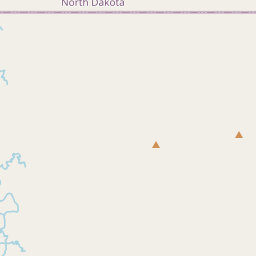Picnic Springs Campground
Historical marker location:
Ludlow, South Dakota
( Marker is on Foust Road (State Highway 799).)







© OpenStreetMap contributors
Loading...
Searching for other points of interest within 3 miles of this location.The first airplane to fly over the North Pole was piloted by South Dakota native Richard E. Byrd.
About Harding County
Harding County Timeline
Harding County, South Dakota has a rich history that dates back to the late 1800s. The area was originally inhabited by Native American tribes, including the Cheyenne, Sioux, and Crow. These tribes relied on the land and its resources for their way of life and were eventually displaced as European settlers arrived.
In 1876, gold was discovered in the Black Hills, leading to a rush of miners into the area. This attracted settlers to Harding County, who arrived seeking opportunities in mining, farming, and ranching. The county was officially established on November 3, 1883, and named after J.A. Harding, a South Dakota legislator.
During the early years, the county experienced rapid growth as more settlers arrived. Towns like Buffalo and Camp Crook were founded to support the booming mining industry. However, as the gold rush faded, many miners moved on, leaving behind a struggling economy in Harding County.
In the 20th century, agriculture became the primary industry in the area. The fertile land provided opportunities for farming and ranching, which remain vital to the county's economy to this day. The rural nature of the county has been preserved, with a focus on sustainable agriculture and the protection of natural resources.
Overall, Harding County, SD has experienced a diverse history characterized by the gold rush, the growth of farming and ranching, and the preservation of its rural nature. Today, the county prides itself on its strong community spirit and its commitment to preserving its rich history for future generations.
In 1876, gold was discovered in the Black Hills, leading to a rush of miners into the area. This attracted settlers to Harding County, who arrived seeking opportunities in mining, farming, and ranching. The county was officially established on November 3, 1883, and named after J.A. Harding, a South Dakota legislator.
During the early years, the county experienced rapid growth as more settlers arrived. Towns like Buffalo and Camp Crook were founded to support the booming mining industry. However, as the gold rush faded, many miners moved on, leaving behind a struggling economy in Harding County.
In the 20th century, agriculture became the primary industry in the area. The fertile land provided opportunities for farming and ranching, which remain vital to the county's economy to this day. The rural nature of the county has been preserved, with a focus on sustainable agriculture and the protection of natural resources.
Overall, Harding County, SD has experienced a diverse history characterized by the gold rush, the growth of farming and ranching, and the preservation of its rural nature. Today, the county prides itself on its strong community spirit and its commitment to preserving its rich history for future generations.
Harding County Timeline
This timeline provides a condensed summary of the historical journey of Harding County, South Dakota.
- 1803 - The area that would become Harding County is included in the Louisiana Purchase.
- 1868 - The Fort Laramie Treaty between the US government and the Lakota Sioux tribe establishes the boundaries of Lakota territory, which includes present-day Harding County.
- 1876 - Gold is discovered in the Black Hills, leading to increased settlement in the area.
- 1881 - Harding County is established as a county in Dakota Territory.
- 1890 - Harding County becomes part of the newly-formed state of South Dakota.
- 1910 - The Harding County Courthouse is built in Buffalo, the county seat.
- 1950s - The construction of the Shadehill Dam and Reservoir provides a reliable water supply for the region.
- 2010 - Harding County's population reaches its peak at around 1,320 residents.